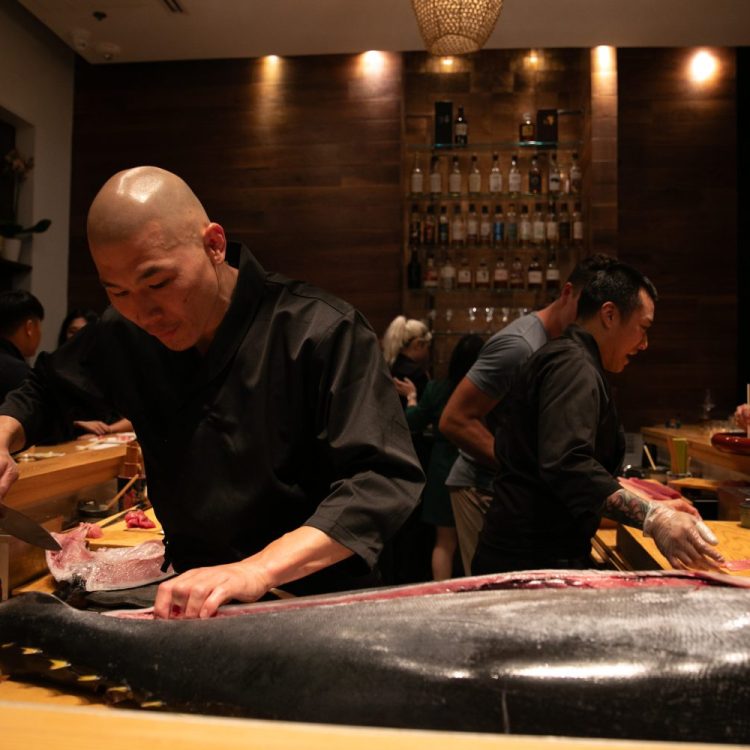Mexican food is as rich and varied as any of the world’s great cuisines, and many of its centuries-old dishes and techniques are still in rotation today. That includes mole, the pre-Columbian sauce that’s made in endless varieties and incorporates influences from Mexico’s first indigenous peoples, as well as Spanish colonists and their global spice rack.
Mole is found all over Mexico, with regional varieties differing from state to state, but its origin story leans toward Puebla and Oaxaca, which both claim provenance over the sauce. Puebla’s mole poblano — a thick and savory sauce featuring chiles and chocolate — may be the most famous iteration, while Oaxaca is prized for its seven moles, which are available in a kaleidoscope of colorful styles, including negro, rojo, verde and amarillo.
Naturally, mole crossed the border long ago, and today some of Texas’s best mole is served at El Naranjo, the Austin restaurant from chef Iliana de la Vega, who was awarded the 2022 James Beard Award for Best Chef: Texas. She and her husband first opened El Naranjo as a restaurant and cooking school in Oaxaca, eventually moving to Austin and reestablishing the concept in 2012.
El Naranjo serves traditional Mexican cuisine that highlights dishes beyond Tex-Mex and tacos. That means house-made masa, indigenous Mexican ingredients and an extensive menu of agave spirits — plus mole.
Tesla Readies Austin’s First Robotaxi Test
Tesla is rolling out its autonomous vehicle ride-sharing serviceChef de la Vega explains that moles are composed of three primary components: chiles and other vegetables, spices and a thickener. Dark moles often feature dried chiles like ancho, pasilla and guajillo, while lighter moles include fresh chiles like jalapeño or serrano. Popular spices include black pepper, cloves, cinnamon and thyme (chocolate is thrown into this category, too). And common thickeners are tortillas, bread and nuts.
“Moles are a reflection of what’s in the neighborhood and available in the area,” says de la Vega. Oaxaca grows different varieties of chiles and herbs than those in Puebla, so moles naturally vary by geography.
Though it’s technically a sauce, de la Vega notes that mole itself is the dish, not the components you serve it with. “The protein and vegetables are not relevant to the mole,” she says. “I personally prefer it with a little rice, some tortillas, and the sauce. That to me is a perfect meal, but it’s a hard sell.” That’s because so many people in America, and elsewhere, think a complete meal requires protein, starch and vegetables, all visible on the plate. You can’t see all the vegetables and starch in the mole, but they’re there.
At her restaurant, de la Vega typically offers two moles. Currently the menu features Mole Negro de Oaxaca, which is served with duck breast. The sauce is made with 34 ingredients, including slow-roasted mulato and chilhuacle negro chiles, and takes three days to make, so it’s produced once per week in large batches. The Mole Amarillo is lighter and less intensive, requiring about 12 ingredients, including guajillo chiles, tomatoes and fresh herbs. It’s served with tuna steak or seasonal vegetables.
Considering the time it takes to create mole, and the skill required to balance its many flavors, it’s a dish that’s usually best enjoyed in a restaurant under the watchful eyes of a chef. If you want to try making it at home, de la Vega suggests skipping right past mole negro and mole poblano. They require too many ingredients for the home cook, and there’s no shortcut to developing the intense, complex flavors. Green and yellow moles use fresh ingredients and are quicker to make, so those are a good place to start.
“Mole should be a very harmonious dish,” says de la Vega. Too many ingredients or improper ratios can dilute or concentrate flavors, killing the harmony and producing a mole that has too much cinnamon or chocolate, for example. That’s the chef’s fault, not a reflection of mole as a whole.
“If you think you don’t like mole, try a different one,” she says.
This article appeared in an InsideHook newsletter. Sign up for free to get more on travel, wellness, style, drinking, and culture.


























